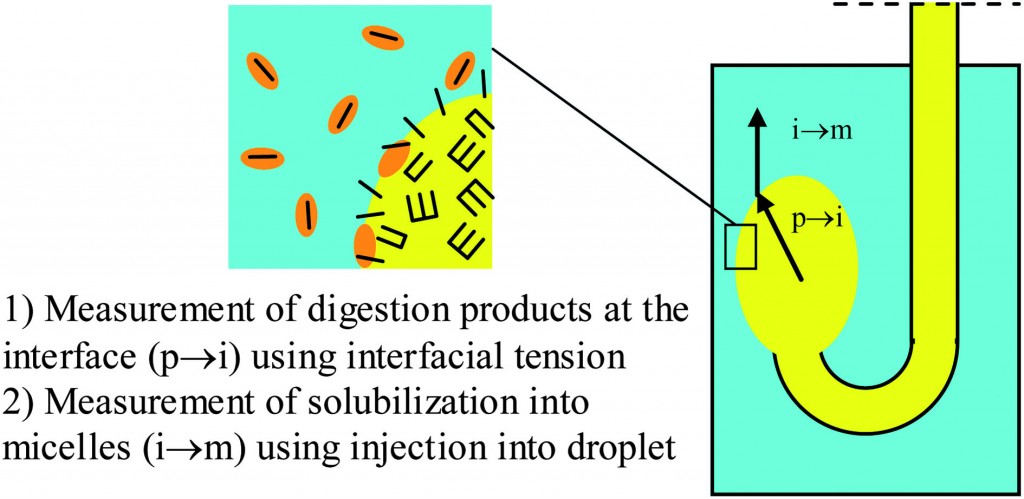Understanding the health, safety and nutritive aspects of foods is becoming increasing important, as evidence builds to suggest that diet plays a part in some chronic illnesses. As a part of this, the effective nutritive intake may differ from the food content, for example a structure containing a micronutrient is not broken down during digestion. A popular model food system is an emulsion, a liquid-liquid dispersion.
In this hot paper, Marze and Choimet compare the in vitro digestion of emulsions with different formulations using various techniques. They use classical physicochemical methods to build on their previous study (DOI: 10.1039/c2sm26334c) on diffusion methods to check the roles of other factors other than the effect of the triglyceride on digestion. The authors describe mass transfer models that identify the mechanistic paramenters and help the data interpretation. All the techniques showed that the type of triglyceride is the dominant parameter in explaining the emulsion digestion.
In vitro digestion of emulsions: mechanistic and experimental models
Soft Matter, 2012, 8, 10982. DOI: 10.1039/c2sm26336j. (free to read for a short time)
Follow the latest journal news on Twitter @softmatter or go to our Facebook page.
To keep up-to-date with all the latest research, sign-up to our RSS feed or Table of contents alert.











